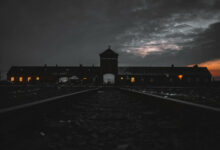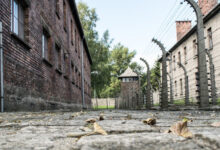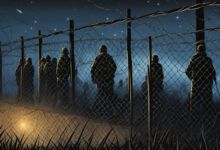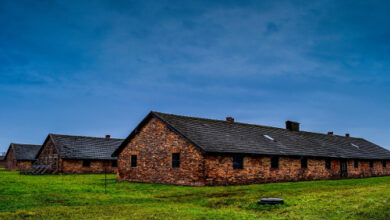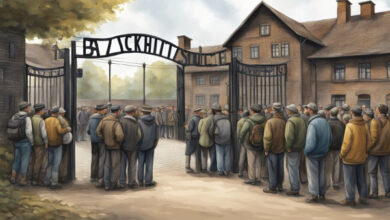Concentration camps in Poland
Learning from the horrors of history: concentration camps in Poland
The German camps in occupied Poland during World War II were built by the Nazis between 1939 and 1945 throughout the territory of the Polish Republic, both in the areas annexed in 1939, and in the General Government formed by Nazi Germany in the central part of the country. The camp system was one of the key instruments of terror, while at the same time providing necessary labour for the German war economy.
The concept of concentration camps
The concept of concentration camps has been with us for 124 years, they are black cards in the history of mankind.
The Spaniards formed one of the first concentration camps. General Valeriano Weyler y Nicolau created first on already in 1896 in Cuba, where rebels and insurgents were placed.

In the years 1899 – 1902 British concentration camps were created, they were managed by General Horatio Herbert Kitchener. Where insurgents fighting against England were placed. 27,000 prisoners died there.
Even before World War I in 1904, the Germans created concentration camps in German South-West Africa. Today, there is a country know as Namibia. 80,000 people died due to a lack of food and hard labour in this camp.
An interesting fact is that in this camp one of the responsible person was the father of Hermann Goring – Heinrich Enest Goring. In 1918, Soviet Russia created its own concentration camps in Siberia, later known as gulags.
First concentration camp by Germans
The Germans created the first camps in Europe in 1933 – the very first was located in Dachau. They founded them in occupied countries such as Poland.

Concentration camps during World War II
In the Polish lands, the Germans located the first camp in Oświęcim – Auschwitz – in 1940. Another camp was established in Lublin – Majdanek in August 1941, there were 50,000 prisoners in the camp. That same year, a camp was set up in Brzezinka called as Birkenau, and in Rogoźnica – Gross Rosen.
Near Gdańsk around 1942, a camp in Sztutowo – Sonderlager Stutthof was created, where resistance members were placed. Stutthof and Gross Rosen camps had 119 sub-camps located in former lands of Poland and Czech occupied by the Nazis.
Other concentration camps created by the Germans were locations such as Chełmno, Bełżec, Sobibor and Treblinka.
It should be noted that the above camps are only a fraction of the total of all camps. Smaller civilian camps subordinate to local authority were created, not SS.
They were forced labour camps – where the prisoners went to hard work in which the resources of Polish lands were exploited. People were forced to build roads, fortifications and agricultural works.
There were also local resettlement camps that served to relocate the Polish population to German territories and total Germanization of the population.
Start Planning Your Krakow Trip Now!
- Unsure where to stay in Krakow? Discover top-rated Old Town and Kazimierz hotels with Booking.com.
- Book your airport transfer now and enjoy a hassle-free ride directly to your hotel. Driver will meet you at John Paul II International Airport Kraków–Balice.
- Take a Tour of Auschwitz. Arrange a visit to the Auschwitz-Birkenau Memorial and Museum to pay tribute and learn about this significant historical site.
⚠️ SUMMER BOOKING ALERT: Auschwitz tours are in high demand during the busy summer season. Secure your visit now to guarantee your preferred date and time slot. Last-minute availability cannot be guaranteed during this peak season. Due to increased visitor numbers in summer, it’s strongly recommended to book your tickets and tour to Auschwitz well in advance to secure your preferred dates and times! 🔖
- Explore the Fascinating Wieliczka Salt Mine! Book your guided tour today. These tours are very popular, so book early to avoid disappointment and ensure your spot.
- Looking for ideas? Check out our KrakowTOP.org recommended itineraries, including the famous Christmas Market, holiday events, and must-see Krakow attractions like Wawel Castle, Oskar Schindler’s Factory and St. Mary’s Basilica.
Over 1,200,000 Poles found themselves in these camps. The last type of camps were prison camps – where inmates similarly did very hard work.

In recent years, the concept of “Polish concentration camps” has been coined due to ignorance, hypocrisy and propaganda. Which according to foreigners were to refer to German camps in Poland.
However, it is currently identified in many countries with concentration camps for Jews created and managed by Poles. Which is a cruel lie, that’s why Polish activists created the German Death Camps campaign. It is a project aimed at declining the history of Polish nation and concentration camps in Poland.
Already in 2017, a “riding” banner with the inscription German Death Camps – a car with a huge banner left the route from Wrocław to Germany, then Belgium and Great Britain.
The goal is historical education and preaching the truth about the camps. The matter is clearly difficult and the phrase “Polish concentration camps” is now abused and used in the wrong context.
